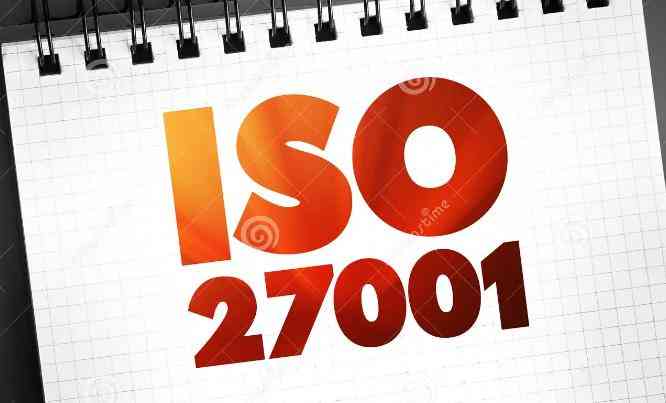|
SLOVENSKI STANDARD
01-februar-2023
Aeronavtika - Ravnanje z nepopravljivimi predmeti
Aerospace series - Management of unsalvageable items
Luft- und Raumfahrt - Management nichtverwendbarer Gegenstände
Série aérospatiale - Gestion des éléments irrécupérables
Ta slovenski standard je istoveten z: EN 9147:2022
ICS:
49.020 Letala in vesoljska vozila na Aircraft and space vehicles in
splošno general
2003-01.Slovenski inštitut za standardizacijo. Razmnoževanje celote ali delov tega standarda ni dovoljeno.
EN 9147
EUROPEAN STANDARD
NORME EUROPÉENNE
November 2022
EUROPÄISCHE NORM
ICS 49.020
English Version
Aerospace series - Management of unsalvageable items
Série aérospatiale - Gestion des éléments Luft- und Raumfahrt - Management nichtverwendbarer
irrécupérables Gegenstände
This European Standard was approved by CEN on 8 May 2022.
CEN members are bound to comply with the CEN/CENELEC Internal Regulations which stipulate the conditions for giving this
European Standard the status of a national standard without any alteration. Up-to-date lists and bibliographical references
concerning such national standards may be obtained on application to the CEN-CENELEC Management Centre or to any CEN
member.
This European Standard exists in three official versions (English, French, German). A version in any other language made by
translation under the responsibility of a CEN member into its own language and notified to the CEN-CENELEC Management
Centre has the same status as the official versions.
CEN members are the national standards bodies of Austria, Belgium, Bulgaria, Croatia, Cyprus, Czech Republic, Denmark, Estonia,
Finland, France, Germany, Greece, Hungary, Iceland, Ireland, Italy, Latvia, Lithuania, Luxembourg, Malta, Netherlands, Norway,
Poland, Portugal, Republic of North Macedonia, Romania, Serbia, Slovakia, Slovenia, Spain, Sweden, Switzerland, Türkiye and
United Kingdom.
EUROPEAN COMMITTEE FOR STANDARDIZATION
COMITÉ EUROPÉEN DE NORMALISATION
EUROPÄISCHES KOMITEE FÜR NORMUNG
CEN-CENELEC Management Centre: Rue de la Science 23, B-1040 Brussels
© 2022 CEN All rights of exploitation in any form and by any means reserved Ref. No. EN 9147:2022 E
worldwide for CEN national Members.
Contents Page
European foreword . 3
Introduction . 4
1 Scope . 5
2 Normative references . 5
3 Terms and definitions . 5
4 Requirements . 7
4.1 General requirements . 7
4.2 Unsalvageable item management process requirements . 7
4.3 Scrapping options . 8
Annex A (informative) Unsalvageable items management flowchart . 9
Figure A.1 — Unsalvageable items management flowchart . 9
Bibliography . 10
European foreword
This document (EN 9147:2022) has been prepared by the Aerospace and Defence Industries
Association of Europe — Standardization (ASD-STAN).
After enquiries and votes carried out in accordance with the rules of this Association, this document has
received the approval of the National Associations and the Official Services of the member countries of
ASD-STAN, prior to its presentation to CEN.
This document shall be given the status of a national standard, either by publication of an identical text
or by endorsement, at the latest by May 2023, and conflicting national standards shall be withdrawn at
the latest by May 2023.
Attention is drawn to the possibility that some of the elements of this document may be the subject of
patent rights. CEN [and/or CENELEC] shall not be held responsible for identifying any or all such patent
rights.
Any feedback and questions on this document should be directed to the users’ national standards body.
A complete listing of these bodies can be found on the CEN website.
According to the CEN-CENELEC Internal Regulations, the national standards organisations of the
following countries are bound to implement this European Standard: Austria, Belgium, Bulgaria,
Croatia, Cyprus, Czech Republic, Denmark, Estonia, Finland, France, Germany, Greece, Hungary, Iceland,
Ireland, Italy, Latvia, Lithuania, Luxembourg, Malta, Netherlands, Norway, Poland, Portugal, Republic of
North Macedonia, Romania, Serbia, Slovakia, Slovenia, Spain, Sweden, Switzerland, Türkiye and the
United Kingdom.
Introduction
The International Aerospace Quality Group (IAQG), with representatives from aviation, space, and
defence in the Americas, Asia/Pacific, and Europe, benchmarked industry best practices and guidance
to develop the requirements of unsalvageable items management. The key objectives of this document
are to:
— prevent unsalvageable items from being used for manufacturing, maintenance, or repair of aviation,
space, and defence products;
— specify the conditions of their reclassifications; and
— mitigate the risk of unsalvageable items being disassembled.
This document is complementary to EN 9100-series standards (i.e. EN 9100, EN 9110, EN 9120)
requirements associated to the control of nonconforming products.
This document standardizes unsalvageable item management process requirements to the greatest
extent possible. It can be used at all levels of the supply chain by organisations around the world to
mitigate the risk to use unsalvageable items within aviation, space, and defence products to improve
and ensure the performance, reliability, and safety of these products.
This document provides the following potential benefits:
— standardizes unsalvageable management process requirements;
— integrates aviation, space, and defence industry best practices and guidance;
— increases product quality and safety;
— achieves cost savings due to unsalvageable item reclassifications;
— reduces waste/environmental footprint by fostering reclassification;
— protects companies’ intellectual property by preventing reverse engineering on unsalvageable
items.
1 Scope
This document is applicable to all items used for manufacturing, maintenance, and repair of aviation,
space, and defence products from the raw material to the final product (e.g. aircraft, structural items,
constituent assemblies, standard parts, consumables with conformity and/or safety impact).
This document considers items dispositioned as scrap in accordance with EN 9100-series standards’
supporting nonconformity management, corrective action, or organisation decisions (e.g. obsolescence,
inventory management, missing traceability documentation).
The requirements specified in this document are complementary (not alternative) to contractual and
applicable statutory and regulatory requirements. Should there be a conflict between the r
...














